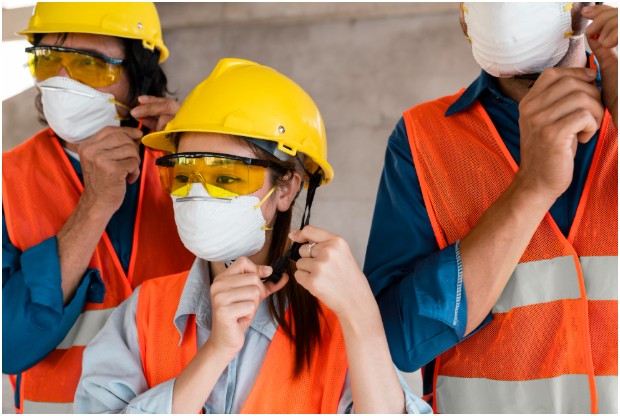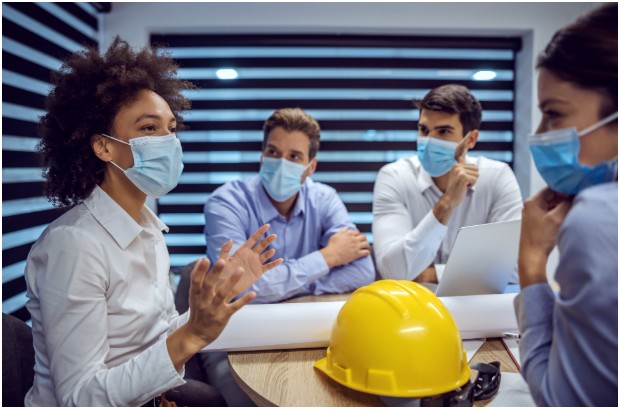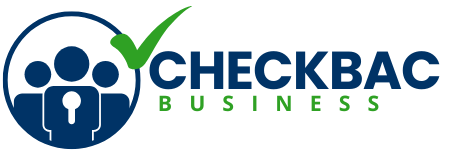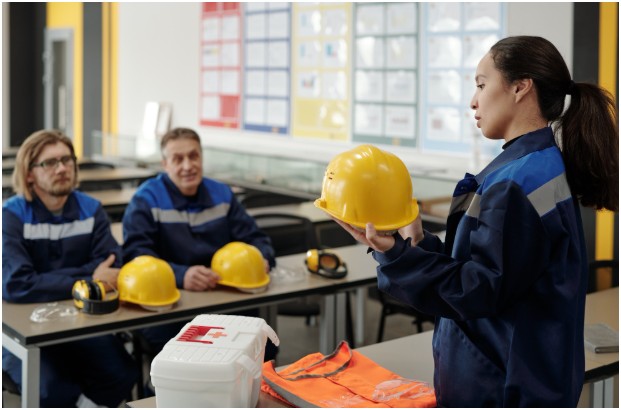In my early 20s, I had my first job as a safety assistant at a small manufacturing plant. Eager to impress, I threw on gloves and goggles without asking any questions. How hard can it be?
Fast-forward one hour, and I had managed to fog up my face shield, nearly trip over unlaced steel-toe boots, and, oh, accidentally contaminate a clean zone.
My supervisor gave me a look that still haunts me. It turns out that nobody had officially trained me on PPE—Personal Protective Equipment. I had gear, sure, but not the know-how.
That moment has stuck with me, and now, having spent over 12 years in safety policy and compliance, I’ve seen this happen way too often.
Which brings us to today’s big, important question: Who is responsible for training workers on the use of PPE? Let’s unravel this together.
Why Does PPE Training Even Matter?

Here’s the thing: PPE isn’t just a hard hat and a “good luck out there” wave from your manager. It’s a system. A layer of last-resort protection that only works when it’s used correctly. And correct use doesn’t come from guessing—it comes from proper training.
When workers aren’t trained:
- Respirators get worn wrong (or not at all)
- Gloves get used for the wrong hazards
- Eye protection fogs or fails
- People think they’re protected when they’re not
PPE training can mean the difference between a minor scare and a life-altering injury. And no, handing someone a box of gear with a smile doesn’t count as compliance.
So, Who Is Responsible for Training Workers on the Use of PPE?

Here’s the straight answer: employers are responsible. Yep, it’s not optional and it’s not something you can pass off to HR or “the guy with the clipboard.”
According to OSHA (the Occupational Safety and Health Administration), employers must:
- Assess the workplace for hazards.
- Identify the appropriate PPE.
- Provide that PPE at no cos.t
- And—yes—train employees on how to use it properly.
This training has to be specific. It should cover when PPE is needed, what type of PPE is required, how to wear it, how to care for it, and how to identify damage or failure. And that training has to be documented, not just mentioned in a Monday meeting over stale donuts.
So next time you’re wondering, who is responsible for training workers on the use of PPE?—Remember, it’s the employer’s legal duty.
What Happens If PPE Training Isn’t Done Right?

The short answer? Big consequences.
I’ve seen everything from nasty chemical burns to multimillion-dollar lawsuits stem from poor or nonexistent PPE training. Beyond the personal cost to workers, companies face OSHA citations, downtime, reputation loss, and hefty fines.
Let’s be honest: if a worker gets hurt and the employer didn’t train them properly? That’s not just a legal issue—it’s a moral failure. We’re talking about real lives here.
Besides, good training builds trust. When employees know you’ve got their back with real preparation, they feel safer, more confident, and more engaged on the job.
How to Make the Most of “Who Is Responsible for Training Workers on the Use of PPE?”
Okay, so you’re the employer—or maybe the safety manager or HR lead. What now?
Start by doing a hazard assessment of your workspace. What are the physical, chemical, or biological risks? Once you identify those, choose the right PPE. Respirators, gloves, steel-toe boots, full-body suits—whatever’s required.
Then set up training sessions that don’t just tick a compliance box. These should be interactive, hands-on, and tailored to your workers’ actual tasks. Demo how to inspect, put on, and take off each type of PPE. Talk about maintenance and replacement schedules.
Encourage questions. Share real-life stories. Make it clear that wearing PPE is about more than rules—it’s about getting home safely every day.
And don’t forget to retrain. OSHA recommends refresher training whenever there’s a change in equipment, workplace hazards, or if a worker isn’t following protocols.
What Should Be Included in PPE Training?
Now you know who is responsible for PPE training, but what should that training include?
Here’s the golden list:
- When PPE is necessary
- What PPE is required
- How to properly wear, adjust, and remove PPE
- The limitations of each type of PPE
- Care, maintenance, and disposal
- How to recognize damage or contamination
- Worker responsibilities vs. employer responsibilities
You can even turn this into a handy reference chart for your team—simple, visual, and practical. Good training isn’t about overwhelming people. It’s about making them feel confident and prepared.
FAQ: Got Questions About PPE Training? You’re Not Alone
Do employees have any responsibility regarding the use of PPE?
Yes—but only after proper training. Once trained, employees are expected to wear personal protective equipment (PPE) correctly, report any issues, and follow established procedures. However, it begins with the employer laying the foundation.
Can PPE training be done online?
Some parts can be, like theoretical overviews or quizzes. But hands-on application is key. Don’t rely on e-learning alone unless you’re backing it up with practical sessions.
How often should PPE training be done?
At a minimum, once a worker is assigned tasks requiring PPE. Retraining should happen if procedures or equipment change, or if the worker isn’t using PPE properly.
What if the worker already knows how to use personal protective equipment (PPE)?
You still need to verify and document it. OSHA doesn’t accept “they already knew” as an excuse. Even seasoned workers should go through a site-specific PPE walkthrough.
The Final Scoop Before You Gear Up
Who is responsible for training workers on the proper use of PPE? It’s the employer. Every time. No matter the industry, no matter how small the team.
As someone who has been in the safety world for over a decade, I can tell you: conducting PPE training effectively is one of the best investments you can make in your people.
Don’t assume. Don’t skip it. And don’t settle for checklists without conversations.
If there’s one warm thought to leave you with, it’s this: when workers are properly trained, they don’t just wear PPE—they own it. They make smarter decisions, speak up sooner, and become safety allies, not just safety risks.
Here’s to clear policies, confident teams, and the peace of mind that comes from knowing you’re doing it right.



